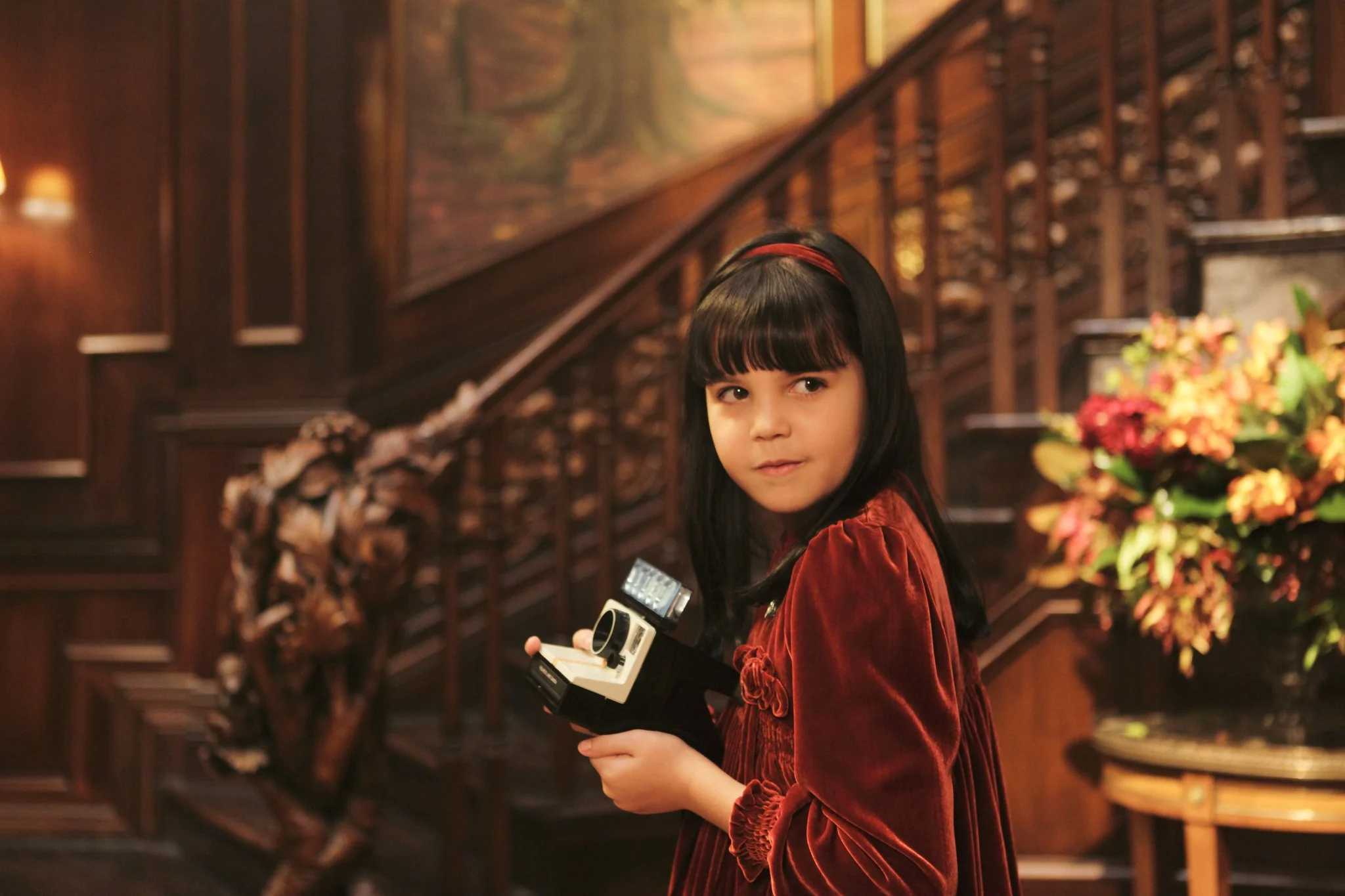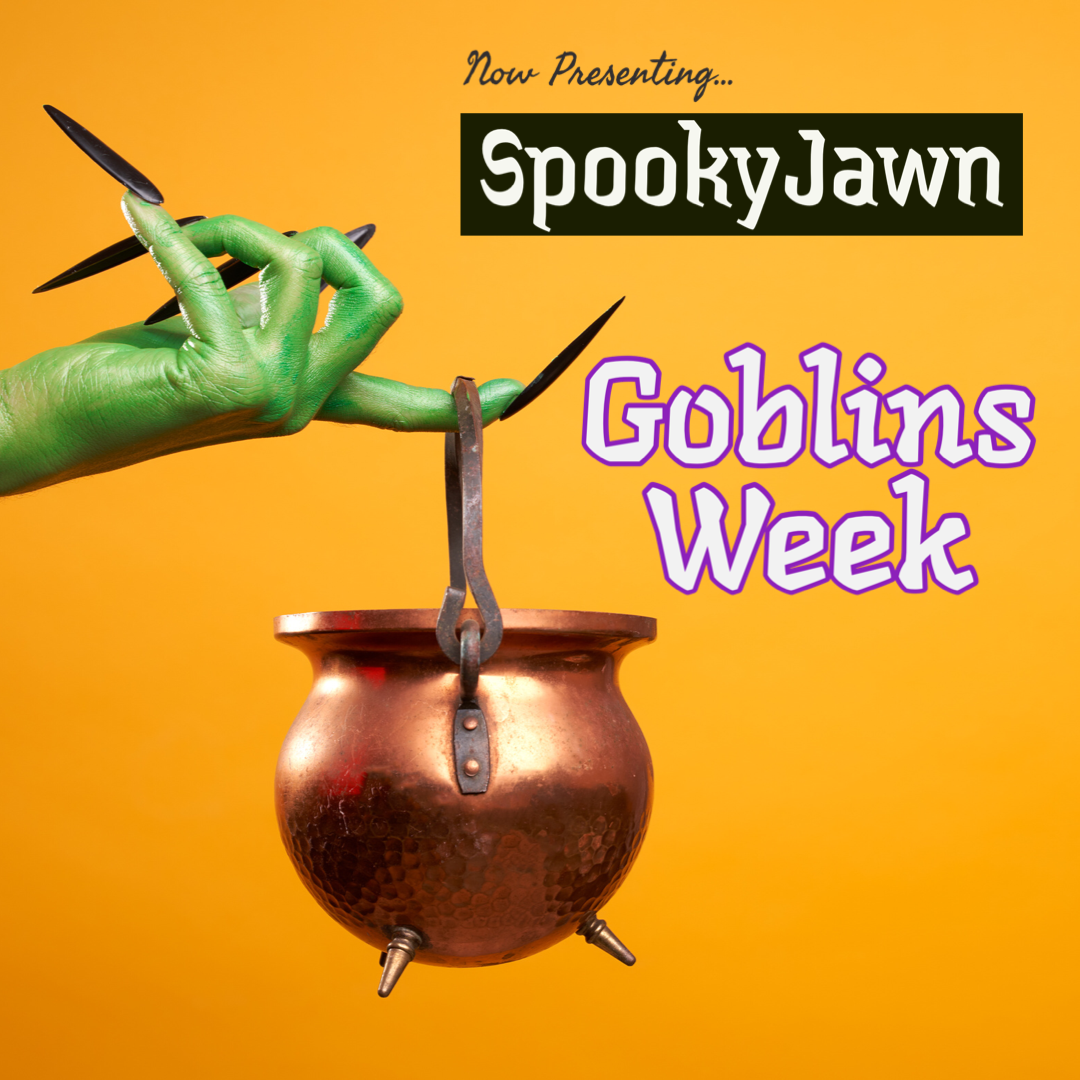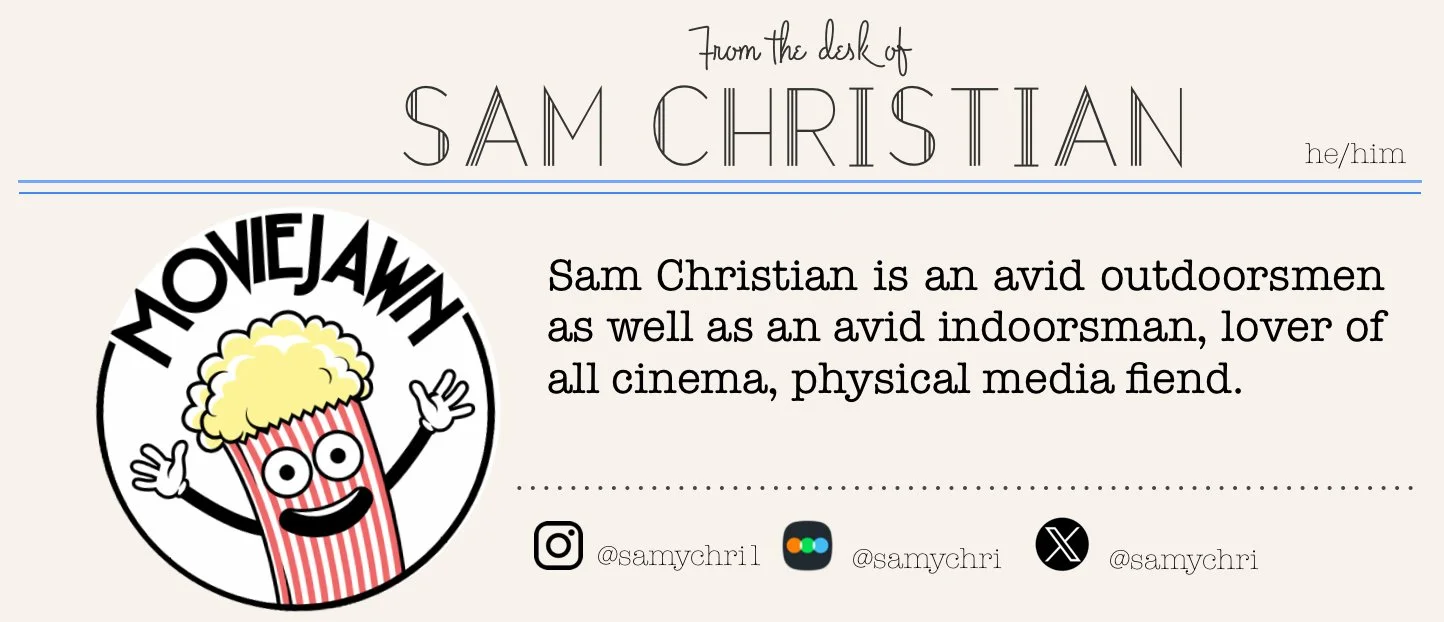Goblins Week: DON'T BE AFRAID OF THE DARK combines fairies and a haunted house with mixed results
Welcome back, goblins and ghouls, to the fourth annual installment of SpookyJawn! Each October, our love of horror fully rises from its slumber and takes over the MovieJawn website for all things spooky! This year, we are looking at ghosts, goblins, ghouls, goths, and grotesqueries, week by week they will march over the falling leaves to leave you with chills, frights, and spooky delights! Read all of the articles here!
by Sam Christian, Staff Writer
Vinyl Pairing: Them by King Diamond
Fairies have been ever-present in the fantasy genre for generations. In the United States, fairies are usually portrayed as being small, winged sprites that fly on butterfly wings granting wishes and perhaps benevolently exchanging money for children’s teeth. Folktales have a tendency of being changed over time, for instance Disney’s Cinderella (1950) is far different from the Brothers Grimm tale–they took out the bodily mutilations of the evil stepsisters during their attempts to fit into the Glass slipper, as well as the subsequent retribution from Cinderella once she becomes royalty. Fairies are no different, and their origins are darker than expected. Writer/Producer Guillermo del Toro understands their dark origins and is an apt student of the gothic. He understands the origins of fairies and has fun with it in his script for Don’t Be Afraid of the Dark (2010). He shows us that instead of benevolent mythic creatures they are—in Del Toro’s words—"nasty, dirty, ambivalent and at times malevolent”.
Don’t be Afraid of the Dark is a modern gothic fairytale written and produced by Guillermo del Toro and the directorial debut and (sole feature film to date) of comic book artist Troy Nixey. The story follows Sally (Bailee Madison), a young girl at the center of her parents’ divorce, who is sent across the country to live with her father Alex (played by a terribly coiffed Guy Pierce) and his new girlfriend Kim (Katie Holmes). Kim and Alex are interior designers, living in, renovating, and hoping to flip a mansion called Blackwood Manor.
\While exploring the grounds of the house, Sally discovers that there is a previously undiscovered basement with an entrance that has been walled off. The basement, as it turns out, was the study of the manor’s namesake, Lord Blackwood. We learn that Kim has done extensive research on Blackwood, a (fictitious) nineteenth century naturalist painter who disappeared shortly after his son’s own disappearance. In the cold open of the film, we see Blackwood offering his teeth to an open furnace grate in the dark cellar. We hear voices demanding children’s teeth and repeating the phrase “one life must be taken”. As he’s offering the teeth they tell him to reach for his son’s hand but instead is dragged down into the hole.
In the modern day, we see that the furnace grate has been bolted shut. The curious Sally begins to hear voices coming from the furnace begging to be set free so they can be her friend. Sally obliges voices and unbolts the grate, revealing a deep hole and a small plate with teeth teetering on the edge. While investigating a tooth, she’s caught by her dad. Not seeing the tooth she’s hiding, he sends her to bed and locks the basement door behind him. We see some very spooky scenes of the voices whispering to each other, they open the grate, and then push the key in the basement door out of the keyhole onto the ground where its then pulled under the door. While in her bed, Sally hides the tooth under her pillow and is rewarded the next morning with a silver dollar. The fairies are revealed the next night. At first, they’re only shown in shadows, but we hear the constant scratching of their small claws on the hardwood floor, scurrying around making mischief for poor Sally. She catches one under the covers of her bed and discovers that the fairies are grotesque, little grey creatures with sunken eyes and sharp teeth.
The rest of the plot is very pedestrian, the fairies create mischief around the house at Sally’s expense. For example, when Sally tells Kim and her dad that it wasn’t her shredding Kim’s dresses or destroying the bathroom, her father doesn’t believe her and thinks she’s acting out because of the divorce. Slowly, Kim starts to understand that maybe there’s something going on after she talks with Sally and realizes that she isn’t angry but terrified. Kim begins to investigate the disappearance of Blackwood, and we are treated to a classic horror movie trope of Kim going into a library to find some answers. The librarian very kindly shows her the private blackwood collection, a collection including all of Blackwood’s artwork before he disappeared. The Librarian then exposes that Blackwood became obsessed with turn-of-the- century mystic Arthur Machen, who wrote prolifically about fairies in his horror stories. Kim discovers that the artwork Blackwood made was almost completely on the subject of small creatures with dark sunken eyes and the phrase “one life must be given” scribbled around the hideous portraits. The Librarian then tells Kim that the fairies in Machen’s stories dwelled deep underground, and also described how they exchange silver coins for children’s teeth. At the end of his info dump he mentions that they return to the surface every once in a while to take someone into the depths in order to replenish their ranks. The film concludes with Kim giving her life to the fairies as Sally escapes, and as they abandon the house, we hear Kim talking with the other fairies about how they hope to be unleashed once more.
Although Don’t Be Afraid of the Dark feels like a del Toro original, it’s actually a remake of a 1973 made-for-TV movie of the same title. In a Q&A del Toro, Nixey and the cast, del Toro cited Don’t Be Afraid of the Dark as well as Karen Black’s classic Trilogy of Terror as early horror inspirations. After watching the first movie, it’s very surprising how Nixey’s version is almost a shot for shot remake of the original. There are several scenes that are plucked directly from the original, such as the scenes involving the lair of the creatures being in a bolted-up basement furnace, the scene where the creatures steal the key after they escape, the bathroom attack scene, the creepy whispers, and even the ending with Sally joining the ranks of the creatures, whispering about the next time they can escape. The only changes from the original involve the creatures and the lead character. In the original, Sally is an adult woman rather than a precocious child, although the very outdated 1970’s gender politics of the original do infantilize the adult Sally. The other change is the design of the creatures. The creature design in the ‘73 version is a mix of hilarious and creepy. The actors are stuffed into gorilla suits and have heads that resemble peach pits with sunken eyes. However ridiculous they were, the sets were very fun. Because they were normal sized actors playing small creatures, the sets involved huge versions of small objects to make the creatures look to scale with small household objects, like giant scissors, and huge mouse holes which they travel the house in.
The other major change from the original is by giving the creatures a backstory, changing them from being simply weird little guys into gothic fairies. This choice shows del Toro’s interest in folklore as well as the gothic. However, backstory of the fairies only comes to fruition in a five-minute expository library research scene. There are some scenes that tie into tooth fairies–they give Sally a silver dollar when she hides a tooth under her pillow—we later find out that they eat the teeth of children. We also see a fairy circle in the garden. These additions combined with wanting to remain faithful to the plot of the original film feels both under and over baked, like a cake with burnt edges with raw insides.
Ultimately, this movie suffers from del Toro not being in the director’s chair and passing it off to a first and ultimately one time director. In the Q&A mentioned earlier, del Toro explains that he did not direct the film because he had already made Pan’s Labyrinth and explains that the two movies have too many similarities. He mostly wanted to focus on the production of the film. His fingerprints are all throughout the movie, in the creature and set designs, the house in particular is incredibly ornate and creepy. Del Toro cites the 19th century illustrator Arthur Rackham as an inspiration for Blackwood’s style of paintings, and Arthur Machen as an inspiration for the gothic fairytale elements. Machen was a gothic horror and fantasy writer, he had a penchant for writing about creatures, their relationship to the land and the folk who keep the knowledge of them alive. In Machen’s short story, The White People, we follow a young girl who explores old ruins and interacts with the “The White People” who turn out to be fairies. The young girl interreacts with them and is warned against them by her nurse—a woman of the common folk who have deep knowledge of these fairies and what they’re capable of. It’s interesting that del Toro describes Don’t Be Afraid of the Dark as a Machenian story when it’s more like a haunted house story with creatures. Contrast this with Pan’s Labyrinth, which features a young girl protagonist interacting with the landscape which is home to many folk creatures and slowly becomes a part of her own fairy tale.
Guillermo del Toro was correct, everything in this movie that could make it better would end up making it almost identical to Pan’s Labyrinth. If there was more lore to the fairies beyond the five-minute exposition from the Librarian, the movie would move smoother than is currently. Alternatively, if there was less of the folk aspect, the movie would just be an effective creature feature. There’s just enough of the folk and gothic horror elements to leave the audience wanting more.





